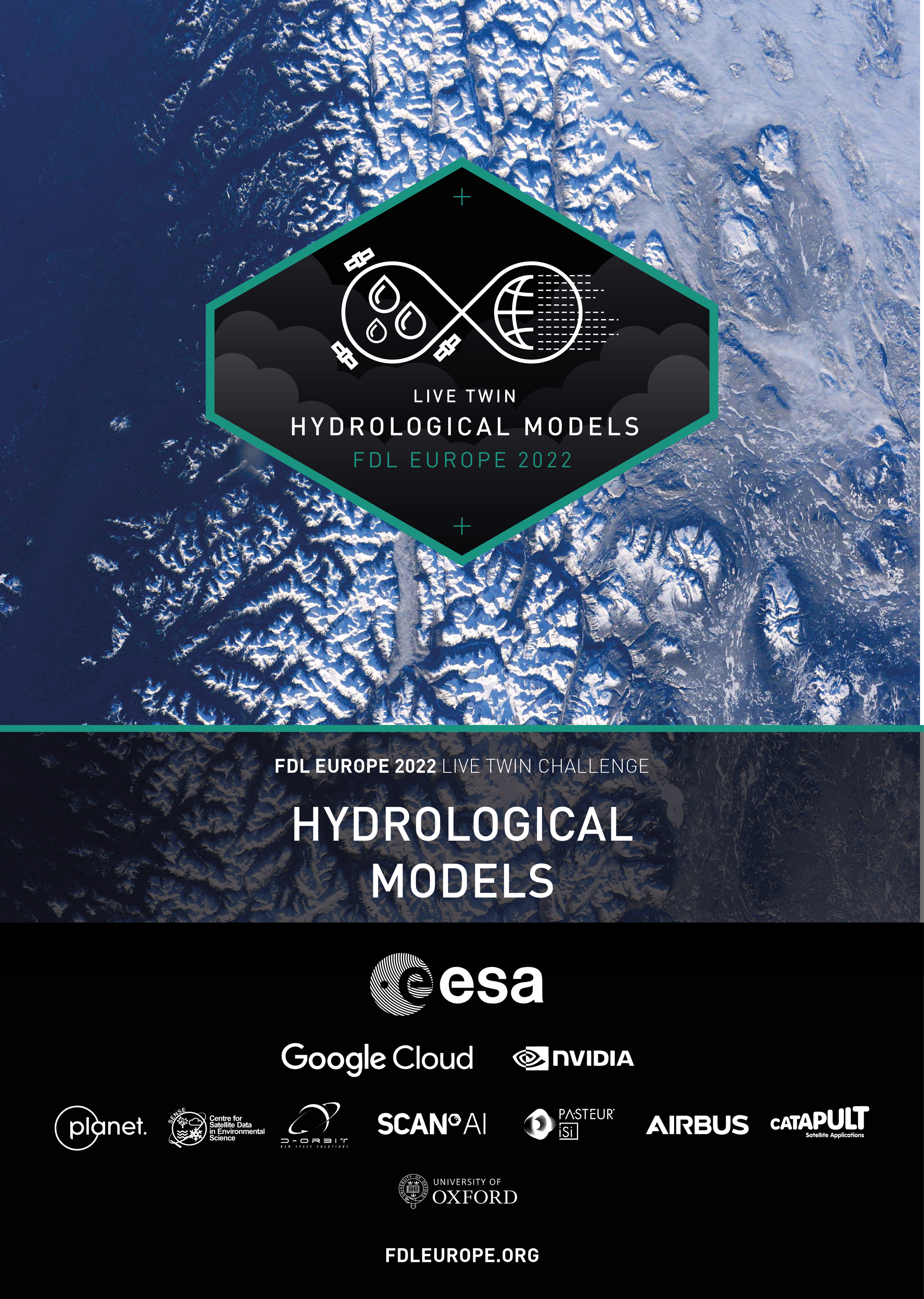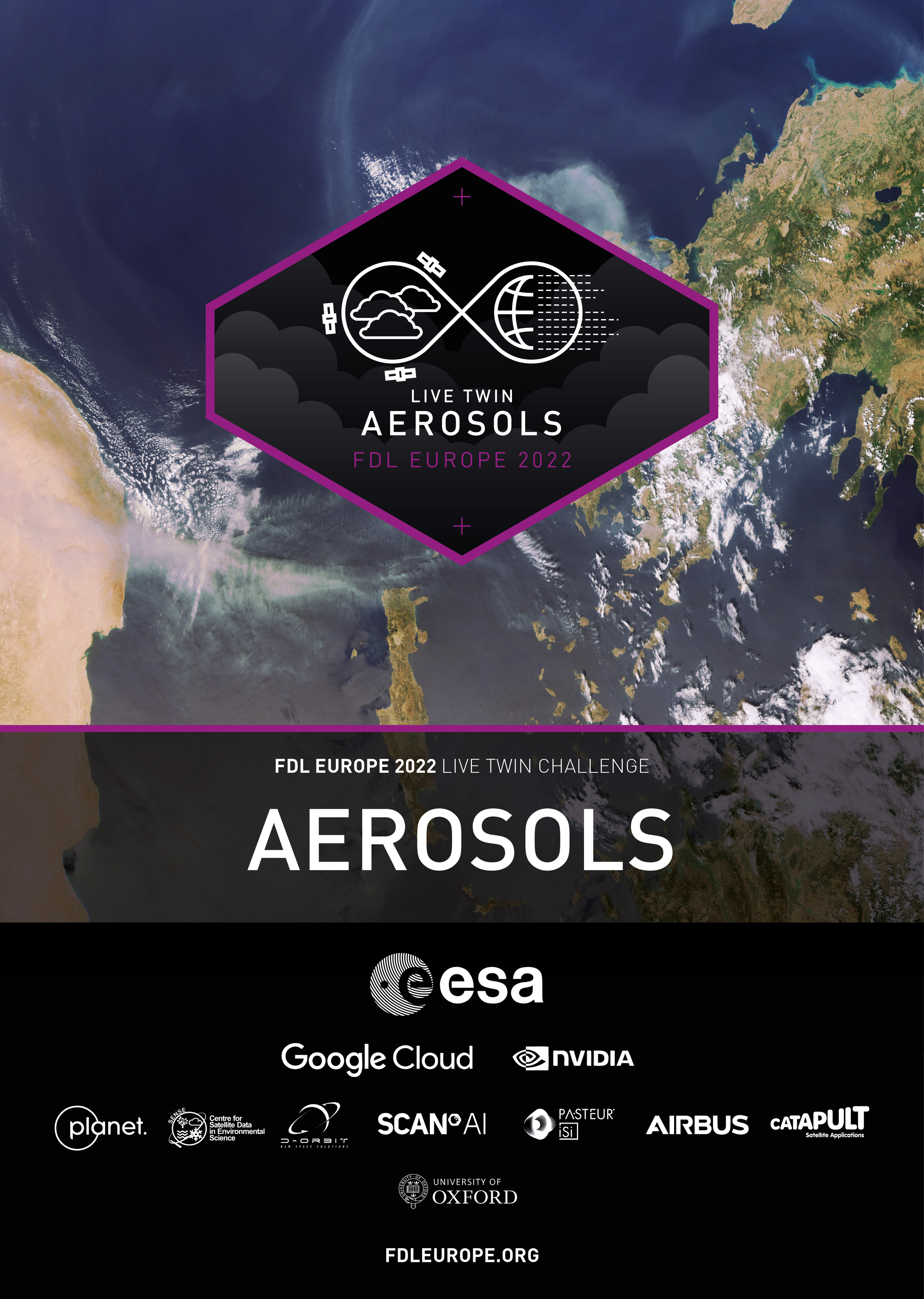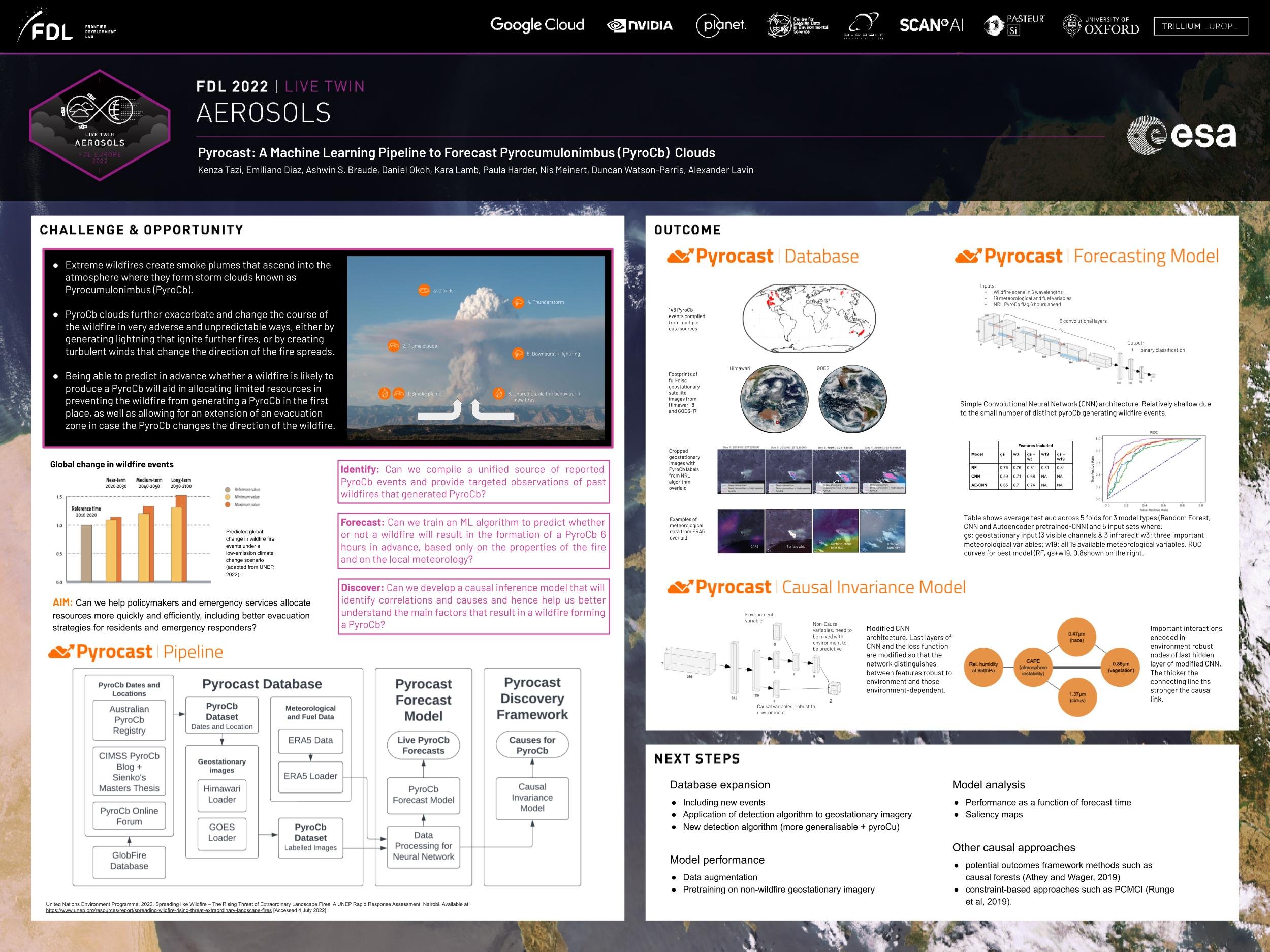
FDL Europe 2022
This year we tackled challenges in the areas of: Energy Futures, Earth Science, Disaster Response, Climate Adaptation, Astrobiology, Lunar Exploration and Heliophysics.
FDL Europe’s ability to attract the best researchers from around the world is part of its success formula - but not all. Over the years, we’ve evolved numerous process innovations that allow FDL Europe research teams to consistently deliver world-class outcomes for our Federal stakeholders at NASA, DOE, and USGS over a very accelerated time-scale.
Challenges Videos
Earth Observation (Live Twin)
Hydrological models
Can we combine physical knowledge and data-driven ML models, informed by real-time satellite data, to build an end-to-end flood prediction system?
In 2020 FDL.AI researchers showed that remote-sensing data from orbiting satellites could be used to build a ‘virtual stream-gauge network’ - a real-time snapshot of water occupancy in rivers and streams.
Since then, deep learning models such as FNOs (Fourier Neural Operators) applied to hydrology data have demonstrated amazing forecast skill, predicting flood inundation and timing better than even tuned and calibrated physical models.
Can we close the loop between remote-sensing data and flood prediction, to bring these data-driven capabilities to regions without ground-based sensors? In other words, generalising capabilities for global use-cases.
Can we understand the extra physical information being encoded by the deep learning models and build an explainable system that combines the speed of ML-driven predictions with the insight of physics?
Earth Observation (Live Twin):
Aerosols
Can we use ML techniques to understand how aerosols and other emissions from extreme fires in our warming world will affect our weather and climate?
Extreme fires are becoming more common around the world, driven by anthropomorphic climate heating.
Burning biomass emits vast amounts of smoke, soot and organic chemicals that linger in the atmosphere for weeks - often spreading around the world. Higher concentrations of aerosols in the atmosphere are thought to lead to increased cloud formation, but the cloud-aerosol-radiation relationship is one of the most uncertain in climate and weather models. Particularly intense fires can generate pyrocumulonimbus clouds, which induce their own weather patterns and are not well understood.
Can we use combined ML and physics models to understand the complex relationship between emissions from wildfires, improving on existing HPC modeling methods using ML and showing how continuous learning methods can outperform traditional modeling?
-
-
Identifying causes of Pyrocumulonimbus (PyroCb) - Neurips 2022 - DOI
Pyrocast: A Machine Learning Pipeline to Forecast Pyrocumulonimbus (PyroCb) clouds - Neurips 2022 - DOI
-
-
-
HOW ELSE CAN I GET INVOLVED WITH FDL Europe?
Follow us on Twitter, LinkedIn and sign up for our newsletter
If you have any questions, please do send us an email













